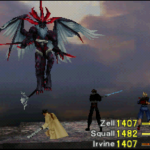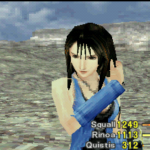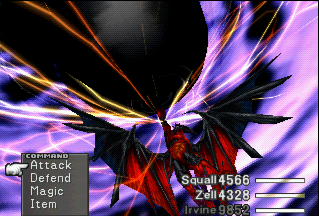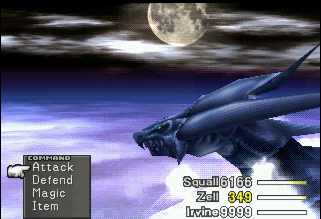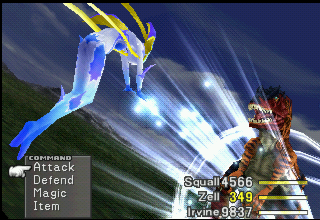Compilation of Final Fantasy
During the Compilation of Final Fantasy article series, my goal is to tell the story of my experience with one of my favorite series of all time. This likely multi-year endeavor will span from my introduction to the series with Final Fantasy VIII, to all mainline entries in the series. Instead of replaying the games in chronological order, I will play them in the order I, personally completed them. For games with multiple ports or adaptations, I will pick my personal favorite rendition and re-play through that one.
I hope everyone enjoys my story and review of one of the most influential series in video game history.
Introduction
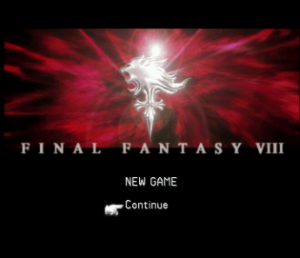
On one fateful day in 1999, a 9 year-old me and a group of friends came across a shady character on the corner hustling outside of my parent’s store. Despite our ingrained inclination to avoid such individuals, there was something particularly special about this man. In his limited collection of mostly useless, and likely stolen, wares laid a beacon of modernity and splendor: a collection of PlayStation games.
Despite being 9 year olds, our level of skepticism was incredibly high, and our trepidation in dealing with strangers incredibly healthy. Needless to say, we were hesitant to interact with this individual. Considering the potential sketchiness of the situation, and the nearly magnetic pull of the PSX games on our pre-pubescent attention, we were forced to act: get my dad.
Being a store owner in an urban environment, he had many a time dealt with the bootleg peddling “entrepreneurs”who generally barged through the door in an attempt to peddle their merchandise to his customer base. As long as they weren’t a nuisance or overtly aggressive in their sales approach, he normally let them make their pitch and leave. On occasion, when the quality of the good was particularly high, and they actually spent money in our own store, he would even give them some play and buy a bootleg here and there. It was for this reason he was consulted in this particular scenario.
As the salesman made apparent his inventory, I was shocked to see one copy each of two fairly new releases: Final Fantasy VIII, for $30 and Syphon Filter, for $20 BRAND NEW. My dad agreed to get me one game as a reward for both my scholastic achievement at the time, and the undeniably good price. I was unsure what direction to go in; my GamePro magazines raved about Final Fantasy, but I wasn’t sure what it or RPGs were, despite being an avid gamer since 1992. I had almost rented Final Fantasy III for my SNES a few years prior, but ultimately ended up settling for Super Mario Kart.
In that moment of indecision an older, and much wiser, friend of mine FIRMLY suggested I get Final Fantasy VIII, even stating if I didn’t like it he would buy it off of me. He clarified what an RPGs was, stating it was like Pokemon, but better and more Adult-focused. From there it was decided, after my father opened the packaging to verify there were actually games in there, and to double check with my friends and I that the disks looked appropriate, payment was made and I quickly abandoned my friends to go try out my new game. As I popped in disk 1 of my first ever multi-disk title, I was transported into a world that forever matured my tastes in games, and opened up an entire new genre to me.
Review
Visuals 10/10
When I started a new game I was treated to the most beautiful cutscene I had ever seen at that point in my life. An expertly choreographed fight scene, a mysterious woman in a field, and a gorgeous sea scape, all unfolded to the backdrop of an intense musical composition that obliterated anything I had ever heard or seen in a game previously.

I remember saying “these are real people, how will they ever make graphics any better than this.” (… lol). At the time, Final Fantasy VIII was the first game I had ever played with CGI FMVs.
To add some context, the jump from 16-bit to 32-bit was so profound, it is hard for someone who didn’t experience it first hand to understand. Over a period of 3 or 4 years I received SEGA Saturn and PlayStation, from my parents, and Nintendo 64 from my grandparents. Crash Bandicoot, Super Mario 64, The Legend of Zelda: Ocarina of Time, Virtua Fighter 2, Daytona USA and Nights Into Dreams absolutely blew me away. The freedom of moving in the third-dimension opened up possibilities that were never attainable when confined to the horizontal and vertical planes. The almighty z-axis permitted exploration more comparable to real life, making the adventures feel so much more real.
I had thought things couldn’t get any better until seeing the aforementioned opening FMV in Final Fantasy VIII. It blew all of my other games out of the water. I realize that many games on PSX had CGI cutscenes, but due to my abundance of consoles, my selection of games were a little limited per console initially. Final Fantasy VIII was my first cinema-quality experience on a video game console, which is why even now watching these FMVs gives me goosebumps.
Taking the FMVs objectively, they are still among the best on the console, and for that matter among the best of the 32-bit era; the beautiful visuals hold up to some extent even today. The FMV graphics themselves are coupled with very well executed direction and musical accompaniment, that really deliver the entire package. There is even a fully choreographed Michael Jackson’s Thriller dance in one of the scenes that plays out during a massive Carnival-like parade procession.

Despite the fact that the 32-bit era’s low polygon count graphics have not aged particularly well, FFVIII manages to stay somewhat graphically relevant thanks to beautifully designed pre-rendered backgrounds. There are a number of stand-out areas including: fiery caverns, beach-side towns, space stations, and even futuristic cityscapes.

This incredibly diverse lineup of locales are what make Final Fantasy VIII standout among both its own predecessors, and competitors. While much of the early series focuses on medieval-fantasy related locales, and VI and VII focus primarily on distinct steam-punk-ish or industrial type settings, the eighth entry in the series manages to offer one of the most widely assorted, albeit quirky, collection of environments in the series.
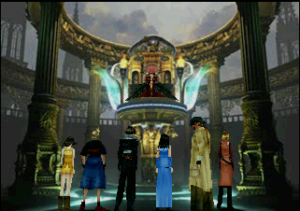
Even though the pre-rendered environments and gorgeous FMVs are what help keep the game’s visuals relevant, the rest of the game still looks pretty darn great, despite being an early attempt at 3D graphics. The sprites outside of battle are a major improvement over the now infamous Final Fantasy VII block graphics, and the polygonal world map builds on what VII brought to the table.
Where the 3D graphics shine most, are the absolutely stunning and over-the-top summon, or Guardian Force (GF), animations. These massive creatures dramatically swoop in to damage enemies or bestow positive effects on party members, each with their own perfectly directed scene that doubles as a time to boost their effectiveness. They are absolutely the best summons in the series’ history in my opinion with regards to character design, attack animations, and integration into the game’s battle system.
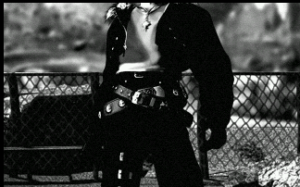
Overall, Final Fantasy VIII delivers a visual experience that satisfies even today, despite the PlayStation’s poorly aging 3D graphics, thanks to beautiful cutscenes, excellent art direction, and varied environments. Taking into account the hardware, Final Fantasy VIII‘s visual presentation is absolutely flawless.
Sound 9.5/10:
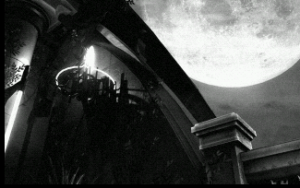
In one of the most underrated soundtracks in Nobuo Uematsu’s storied career, he delivers hit after hit, touching on a wide range of genres and emotions, with a few tracks that are absolutely unmatched by anything else in the series.
Though there are a few generic filler songs, the OST is bolstered by some of Uematsu’s best compositions, many of which can be considered with the best in video game history. It is impossible to cover all of the amazing songs in the game in this article, but I will hit the highlights.
To start, the game’s opener, “Liberi Fatali,” picks up where Final Fantasy VII’s “One Winged Angel” left off in regards to production value, with dramatic orchestral sections accompanied by a menacing Latin choir. It not only is an exceptional piece of music, but it is also perfectly synchronized with the opening FMV, slowly building up the tension until the final climactic sword strike that leads into the game’s logo and opening scene.
“Liberi Fatali” and its accompanying FMV also act as a means to set the stage for the game’s events, both past and present. The theme is seamlessly worked into later compositions in the game, while the song’s name and the FMV’s on screen text help foreshadow what is to come. I challenge anyone to watch FFVIII’s opening scene without being intrigued; easily one of the best pieces Uematsu has ever penned.
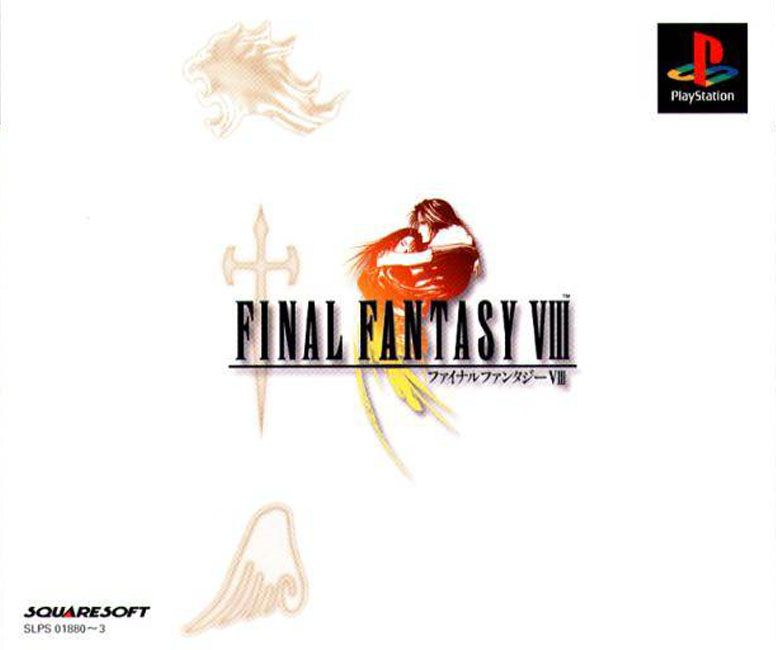
A similarly well accompanied FMV is the sorceress’s parade theme: “Fithos Lusec Wecos Vinosec,” an absolutely menacing tune with haunting choral sections and bone-chilling instrumentals that help bolster the enigmatic nature of the sorceress Edea. As the procession performs a choreographed dance, that is literally Michael Jackson’s “Thriller,” and Squall and Irvine sneak through the firework-laden parade ground, “Fithos Lusec Wecos Vinosec” sets up perfectly one of the most epic scenarios in the game at the end of the first disk. This theme is further incorporated in a few key scenes involving sorceresses in a different arrangement entitled “Succession of the Witches,” this time with an even more sinister tone, executed even more perfectly.
The other music presented outside of battle provide myriad emotional peaks and troughs that truly pull at the players heart strings. From the soothing tones of the incredible “Balamb Garden,” and “Blue Fields,” to the military-inspired sounds of “SeeD,” which sets the stage for some of the game’s large scale operations, to the heart warming melody of the vocal track “Eyes on Me” and its best instrumental variant “Love Grows,” the background music outside of battle run the emotional gambit and act as a means to further envelope the player in the world of Final Fantasy VIII.
Perhaps the pinnacle of the non-battle themes, and perhaps the pinnacle of its kind of song in the series, is “Ending Theme.” Starting off with an eerie, emotionally draining section that makes the player feels as if they are wandering aimlessly through the void, before transitioning into a portion of “Eyes on Me,” and subsequently climaxing in a section that uses the legendary “Final Fantasy” theme that has been used in the ending or opening of nearly of the titles in the series. An absolutely beautiful piece that remains unmatched in the series’ collection of timeless ending themes.
Despite all these spectacular compositions, where FFVIII’s soundtrack really stands out for me, is in its battle themes. In my opinion, an RPG’s battle themes are the cornerstone of the game’s musical presentation. Why? Because in classic JRPGs, most of one’s time is spent in battle; grinding EXP, items, weapons, and money. If the battle theme is not extremely compelling and motivating, the experience can easily slip into monotony.
“Don’t Be Afraid,” the standard battle theme in Final Fantasy VIII, delivers on this front, providing a sense of danger with a spectacular melody accompanied by the intermittent clash of cymbals that help elevate the sense of danger and scale in the battle. “Don’t be Afraid” has a very unique sound relative to other Final Fantasy standard battle themes, and never gets old.
Speaking of unique, “Man with the Machine Gun,” the battle theme for the game’s flash back scenes, is probably the best in FFVIII, and arguably one of the greatest creations in Uematsu’s career. With a pulsating, techno-laden sound, Uematsu manages to craft one of the most intense and catchy pieces of battle music that makes the otherwise average Laguna sequences into something truly memorable. I challenge anyone to not have this song caught in their head for months after finishing Final Fantasy VIII.
Aside from aiding the player through the mundanities of the grind, battle themes are also crucial in helping define the stakes of the pivotal battles of plotline. For example, a powerful boss theme, and particularly final boss theme, can help preserve the power and gravity of the circumstances of that fight in the player’s mind for decades.
To start, the main boss battle theme for Final Fantasy VIII, “Force Your Way,” provides a nearly perfect backdrop for the game’s boss battles, by setting a frenetic pace and providing sufficient anxiety to motivate the player beyond their limits during FFVIII’s more elaborate encounters. Despite arguably being a step down from Final Fantasy VII’s, “Still More Fighting/Those Who Fight Further,” “Force Your Way” is a time tested, and exceptionally well-executed boss theme that can go toe-to-toe with some of the best of all time.
Regardless the quality of the legendary standard battle and boss themes, Final Fantasy VIII’s OST is defined by it specialty boss tracks. Some of these songs are so powerful and motivating, that they have found their way into my workout playlist; nothing like deadlifting while thoughts of slaying Sorceresses dance through your head.
Speaking of which, “Premonition,” the theme for the Sorceress boss battles, opens with a magnificently jarring, and somewhat cacaphonic prelude that quickly evolves into an masterfully composed piece that optimally balances the tension of its climaxes with the mental respites allowed to the player by its troughs.
“Premonition” is easily one of my favorite tracks in the game and stands toe-to-toe with even the game’s final boss theme, “The Extreme.”
“The Extreme” is a multi-part track that begins with chants and distorted sound effects before progressing to an acoustic section that acts as foreplay for the inevitable musical climax to come.
The song puts increasing pressure on the player with a pounding bassline and electronic accountrement, until the track finally peaks in epic fashion, prior to entering a mildly soothing piano section. It is at this point, several minutes into “The Extreme,” that the track finally loops and provides further aural delight.
It is also worth mentioning that these two themes, “The Extreme” and “Premonition” also have absolutely incredible heavy metal renditions by Uematsu’s band, The Black Mages. It is these versions to which I chase those sweet, elusive gainnzz in the gym, due to their innate level of grandeur and underlying aggression. Easily two of Uematsu’s greatest works.
“Maybe I’m a Lion” and “Legendary Beast” are also specialty battle themes that are worth mentioning due to their expert composition and all-around badassery. They both give a sense of grand scale and intensity, despite utilizing unique approaches.
“Maybe I’m a Lion” manages to deliver this by using some heavy guitar work in tandem with a variety of ethnically inspired drum beats that range from tribal to Eastern influences. Though not my favorite portion of the final boss sequence, this track is an occasional entry in my listening playlist, in its Black Mages incarnation, of course.
“Legendary Beast,” on the other hand, uses a slow, no-frills approach to maintaining an un-ebbing level of tension from start to finish. The use of flute work is particularly menacing and is a highlight of the track.
Overall, if I haven’t made it obvious enough, the FFVIII soundtrack is absolutely stellar. Though there are a few weaker tracks on the album, Uematsu still manages to deliver an all-time performance that further cements his legendary status in the annals of video game composition.
Gameplay 8.5/10:
Final Fantasy VIII is one of the more controversial entries in the fabled JRPG juggernaut series. This is due to a mildly convoluted story and the divisive Junction System, that essentially equips magic to individual stats to improve character performance.
The Junction System has for years been a point of contention among Final Fantasy fans; some adore this creative approach to powering up the party and the integration of summons beyond all previous entries, while others complain of the tedium involved in obtaining the necessary magic and the inevitable game-breaking potential of the mechanic.
I will argue that the Junction system is one of the most innovative and unique mechanics in the Final Fantasy series, and in JRPGs in general. Instead of relying purely on leveling up and better equipment to power up party members, the Junction system instead focuses on equipping Guardian Forces (GFs), Final Fantasy VIII’s incarnation of summons, allowing specific stats to become available for upgrade.

Which stats become available are dependent upon the specific GF equipped, so equipping multiple GFs permits the player to upgrade numerous stats at a time.

Once the stats are available, the player is able to equip, or Junction, Magic to a particular stat in order to power it up. For example equipping the GF Ifrit makes the Strength (Str) stat able to be Junctioned. By Junctioning Firaga, the character’s Str stat increases in proportion to the number of Firaga spells available to that character.
Wait? Number of Spells? Yes, unlike other RPGs where spells are always present once learned and cost MP to use, FFVIII treats spells as a consumable commodity with their own separate inventory.
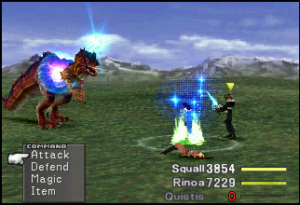
This brings up the next unique mechanic in the game, the Draw system. Characters can “Draw,” or pretty much steal, spells from enemies in battle or from designated “Draw points” in towns and dungeons.
In battle Magic can be Drawn as “Stock” or as “Cast.” Stocking adds an additional number of spells to the inventory, while Casting immediately casts the enemy’s Magic against them.
Though stocking can be monotonous to some, it is not much different than grinding for money and experience, which are staples in the list of standard JRPG tedium anyway, so the inconvenience is highly over-exaggerated.
The ability to stock drawn magic also creates an additional level of strategy considering Magic stock is used to bolster stats, and a greater stock leads to proportional increases in these stats. Therefore using one of these equipped spells can actually lower a party member’s prowess in battle. This creates the need for some careful planning; which Magic should be saved? Which should be used?
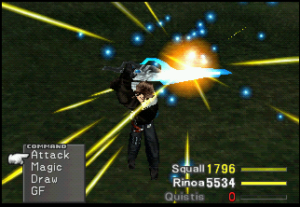
Luckily, in my opinion, most offensive spells are worth saving, considering there are innumerable alternative methods of causing superior damage output. There are a few end-game offensive spells that buck this trend, but it is generally best to use Limit Breaks and GFs as the primary attacking modality.
Support and curative Magic on the other hand, are immensely useful and are often Junctioned to some key stats like HP and Vitality, so the decisions here are a game-long strategic consideration. For example, there are a stable of unique, incredibly useful, spells including Aura, which increases the probability of getting a character’s Limit Break regardless of HP level, Double, which allows a player to Double-cast Magic, and Triple which allows a triple-cast; these spells are absolute game changers, but also significantly increase stats when Junctioned. It is pretty hard to avoid using these spells for both Junctioning and in battle due to their inherent usefulness, and it is this that further depth to the Junction mechanic.
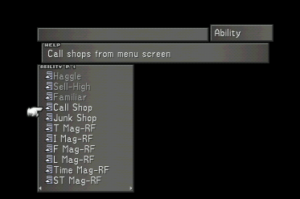
Specialized skills and abilities are also acquired via the Junction system. Each equipped GF has its own collection of skills that can be learned by gaining Ability Points (AP) from battle. These range from Mug, the classic attack/steal combo, Enc-None, an ability that sets the enemy encounter rate to 0%, Junk Shop, allowing the player to call the weapon shop from anywhere in the game, Card Mod, allowing the player to turn playing cards into powerful items and weapons parts, and abilities that allow GF’s stats to be enhanced. These are just a small sample of the vast variety of skills in Final Fantasy VIII that rarely, if ever, were seen in its contemporaries.
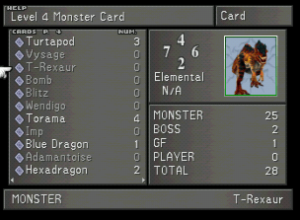
The Junction system also replaces the traditional equipment system that is dogma in the genre. Instead, player equipment has been streamlined to only include weapons. To make matters even more interesting, these weapons are obtained via crafting them from monster parts and other materials scattered throughout the world of Final Fantasy VIII.
Material lists for forging these weapons are found in magazines entitled “Weapons Monthly,” each edition of which contains many of the characters weapons. Again, Final Fantasy VIII attempts to innovate and does so successfully.
Crafted weapons must still be purchased, however, from what are essentially blacksmiths at the “Junk” shop, but the added layer of gathering materials and finding the magazines is a completionist’s dream and make finding the fabled First Edition one of the more triumphant moments as a player.
Weapons Monthly is not the only magazine in the game. Limit Breaks, hints about sidequests, and world building lore are all contained in the various volumes found throughout the game.
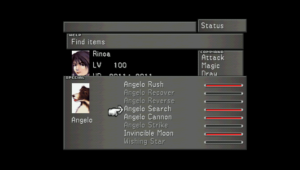
For example, Rinoa and Zell both learn their limit breaks from Pet Pals and Combat King, respectively. Pet Pals allows Rinoa’s pet dog, Angelo, to learn new tricks that are the focal point of the majority of her Limit Breaks. These have a variety of functions including attacking, bestowing positive effects on the party such as temporary invincibility, and recovering HP. Rinoa also eventually obtains a second Limit Break, called Angel Wing. This is a berserk-like state that increases magic attack 5-fold. Rinoa will psuedo-randomly cast magic from her inventory to attack random enemies, but the Magic will NOT be consumed. The usefulness of the Limit Break cannot be overstated, especially when the player appropriately arranges Rinoa’s Magic inventory to weed out undesirable spells. In my opinion this Limit Break is the only viable means of using offensive Magic in the game and should be studied carefully.
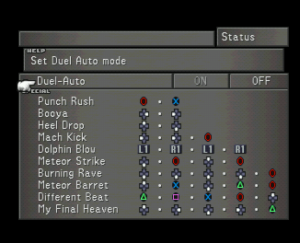
The next magazine, Combat King, allows Zell to learn combos for his Limit Break, Duel, which functions much like Sabin and Tifa’s attacks/Limit Breaks in the series previous entries. Clearly inspired by fighting game combos, the player can enter branching strings of commands as many times as possible before a short time limit expires, adding a layer of skill and coordination to battle. Zells Limit Breaks are my personal favorite, and I love when RPGs attempt to incorporate a level of skill into command inputs.
Not all Limit Breaks come from Magazines, however, each character has a unique method of obtaining their personal variation of these techniques that quickly become the central in-battle strategy in Final Fantasy VIII.
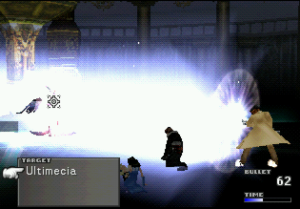
Irvine, the party’s resident sharpshooter, utilizes ammo found throughout the game. Each ammo type has their own unique advantages with regards to damage, rate of fire, and ability to target multiple enemies. Continuing with the theme of interactivity of Zell’s Limit Break, Irvine’s requires the player to literally pull the trigger using R1. Bullets are fired in real-time with button presses, which are only limited by a specific ammo’s reload time. The variety of the ammo allows for a player to choose the best ammo for the situation at hand, until of course they get the game’s ultimate ammo that absolutely obliterates the opposition dealing 9999 damage per shot.
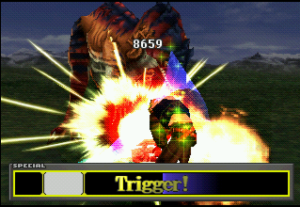
Squall’s Limit Break, Renzokuken, is also somewhat real-time. The player must time R1 button presses with a flashing meter across the bottom of the screen, causing Squall’s flurry of attacks to cause more damage. If executed perfectly there is a high chance Squall will perform a weapon-dependent finishing move, that often causes massive damage. Thanks to these skills, Squall is the king of physical damage output, especially once the fabled Lion Heart sword is obtained. His Limit Breaks are an essential part in battle planning, especially for the game’s tougher battle.
Other character’s Limit Breaks have the more traditional RPG input approach of selecting an attack from a menu, but are nonetheless unique in their own right.
Quitsis’ Limit Break is Blue Magic, which is essentially a collection of enemy skills. This Magic can be used an unlimited amount of times, and are incredibly useful, but most importantly they harken back to the series’ Blue Mage job class, which has always been one of my favorite. The catch is that these spells are learned from monster parts found in battle and from refining cards into items, with some being mildly difficult to obtain. Simply using one of these items on Quitsis once gives permanent access to the associated attack, as long as she is in the Limit Break state. Quitsis’ Limit is definitely worth using, but is overshadowed by almost everyone else’s except Selphie’s in my opinion.
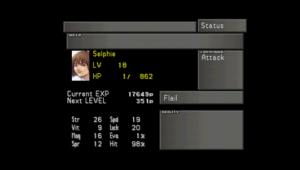
Selphie’s Limit Break, Slot, allows the player to select from a free list of random magic. As the game progresses the spells become better and better, but the selection at one time is limited. If the spell isn’t good enough, the player has the choice to re-draw and hopefully win a better random spell. It is possible to re-draw unlimited times, but the battle still runs in the background, so enemies will still attack. Though, this is my least favorite Limit Break, there are a number of absolutely INCREDIBLE spells that are exclusive to Selphie. These include multi-cast standard magic, Full-Cure, which restores all party members to full HP, Wall, which casts Shell and Protect on all party member bolstering their physical and magic defense, Rapture, which makes all enemies flee, and The End, which ends the battle immediately, and most importantly works on all bosses except one early game boss. In other words, if one is lucky, the game’s hardest bosses can be slain in one move.
Aside from the main party, there are also few temporary characters that also have absolutely unique Limit Breaks, but mentioning them will be minor spoilers, and the characters come pre-loaded with the attacks, so they are far less interesting than the rest of the cast’s Limits.
A diverse set of Limit Breaks, the best collection of summons in Final Fantasy history, and the one-of-a-kind Junction system, act merely as icing on the cake for the underlying Active Time Battle (ATB) system that defined the Final Fantasy series from V to IX.
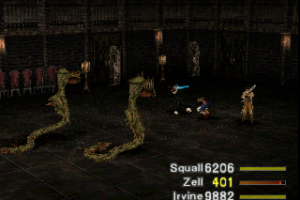
The ATB system is a turn based system, that instead of relying on a calculated turn order from some speed stat and giving the player a defined turn to make a selection, relies on speed to fill a bar making a character’s turn available, but does not stop others from acting.
This means enemies can still attack if a selection takes too long, and multiple characters can have their turn in queue at once, allowing temporary turn skipping and other advanced strategies.
This tried and true ATB system and the unique aspects of FFVIII, create an experience, that in my opinion, has never been duplicated in gaming. The battle system of the game are highly under-rated, and I hope the day comes when these mechanics finally get the respect they deserve.
Though the mechanics are exceptional, FFVIII, suffers from a supposedly mediocre translation of a mildly convoluted story, that at times can leave the player scratching their head. Though, I personally enjoy the story, it is obvious why many are turned off by it; some major enemies’ motivations are unclear, some characters are hard to identify with, and the story can be just plain hard to understand.
Dealing with themes of time manipulation, sorcery, teen angst and romance, VIII seems to have all the making of a stellar Final Fantasy tale, but the execution is objectively sub-optimal, despite being very solid in concept.

An incredibly well written first disk is the pinnacle of the work in my opinion. Dealing with the party’s life in Balamb Garden, which is a combination of military- and college-life, and the related journey of Squall becoming a SeeD officer, Disk 1 offers an unprecedented narrative for the Final Fantasy series.
Execution of various combat operations, with increasingly higher stakes, keeps the player invested and unequivocally interested in the plot. Disk 1’s finale is high drama, and is absolutely shocking. I challenge any player to resist the urge to jump immediately to Disk 2 after completing the first.
Disk 2 continues with the same themes, but makes the conflict take place on a more global scale. More and more fantasy elements, especially more details on sorcercesses help ensure an underlying Final Fantasy “feel” despite the otherwise radical departure from series norms.
This Disk also works to better connect the party member’s and provide better context for the plot as a whole, albeit in a somewhat mystifying way.
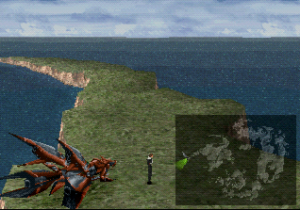
Disk 3 is where character development is at its best, and the romantic themes reach their peak, but the actual plot suffers tremendously. Watching Squall develop is incredibly satisfying, but it is hard to say the narrative of Disk 3 provides sufficient explanation of what the hell is going on. It does not provide clear enough motivation for the game’s ultimate antagonist.
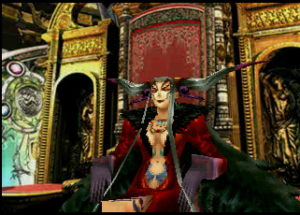
Disk 4 provides no further explanation of these motivations; this could easily make the final battles feel unfulfilling, but they are absolutely epic in nature, overshadowing the hollowness of their purpose. A visually gorgeous, half-hour long, ending is very well executed with regards to audiovisual presentation, but provides no further plot resolution in my mind. The music helps pull at the player’s emotions, and a couple scenes are absolutely heart-warming, but overall it leaves a lot to be desired
In my opinion, it is clear that the plot was rushed. Some plot points seem to pop up randomly and come almost out of left field; without having played the game so many times and performed outside research, I am not sure I have the attention to detail necessary to have ever completely understood what was going on.
I am highly perturbed to this day at the missed opportunity the later half of the game presents. The first half really sets up something that could have been unique and a series defining narrative, but the inconspicuousness of the final boss’ motivations in tandem with the ambiguity of some of the events in Disk 3 yield a sub-par resolution to an otherwise exceptional game.
It is due to this ambiguity and unfulfilling nature of the game’s latter half that has probably helped spawn some of the most creative, though supposedly invalidated, fan theories in history, including “Squall is Dead” or my personal favorite, “R=U”. Though both have been disputed, applying them as a lens to view the narrative during a playthrough has spectacular results.
The first time I played the game utilizing the “R=U” theory changed my life. Defining the motivations of the final boss made all the difference in the world, making an befuddling endgame an emotionally powerful experience.
The fan theories having such an impact, makes it clear that the fans were left unsatiated by what the developers provided in regards to plot. It is for this reason I believe FFVIII could use a remake more than any other entry in the series. Having the opportunity to flesh out the plot and perhaps balance some aspects of the Junction system has potential to create one of the best game’s in history.
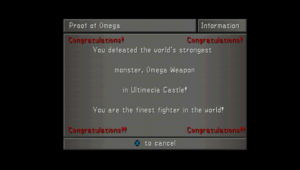
Overall, Final Fantasy VIII is an under-rated gem in the series, on par with Square’s best with regards to mechanics. Including a massive roster of summons, a fully fleshed out trading card game, called Triple Triad, and a healthy offering of sidequests, FFVIII is a content heavy and unique game providing an experience that has yet to be emulated in a JRPG. Final Fantasy VIII is only let down by its plot that leaves the player feeling a bit unsatisfied, but I urge anyone who has not experienced the PlayStation’s blacksheep of the Final Fantasy series to give it a chance; it is truly special and my first true RPG.

RESOURCES:
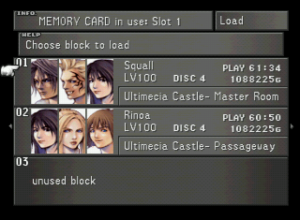
Best End Game Leveling Spots:
Coming Soon
Manipulating Limits: Zell’s Armageddon Fist and Rinoa’s Angel Wing:
OMEGA Weapon Guide:
Coming Soon
R=U Theory (SPOILERS):
Great Explanation of the Theory
Squall Is Dead Theory (SPOILERS):
Great Explanation of the Theory





